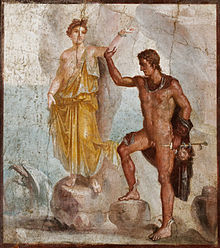Whitewashing in art
[1] In Western art, the omission of black-skinned figures from mythology and history has been a subject of debate, exemplified by the portrayal of Andromeda as white in Clash of the Titans films, despite her original depiction as a black princess from Ethiopia.
This is dubbed snow-blindness and it is common practice when naming European subjects in portraits from the 17th century onwards, as while the African figures depicted alongside them are often referred to as "A Negro' or 'and Servant".
Even when Black figures are depicted in fine clothing, it's often a deceptive representation, with the fancy silks and lace merely serving as decoration that masks the brutal reality of an enslaved life.
British actor and author Paterson Joseph calls this practice racist and dehumanising, and urged the international art community to make efforts to identify and name these figures.
[3] In 2017, the exhibition "The Black Figure in the European Imaginary" took place at the Cornell Fine Arts Museum at Rollins College in Winter Park, Florida.
The article highlights a painting titled "Portrait of a Youth in an Embroidered Vest" by French painter Marie-Victoire Lemoine as an example of how Black servants were often depicted as luxury accessories for the elite.
[5] According to art historian and curator Adrienne L. Childs,[6] interestingly, the exhibition indicates that European artists were more likely to depict Black figures with individuality and dignity, a contrast to the racist exaggerations prevalent in America during the same period.
But later associations with the sin of Ham, son of Noah, led to the ideology of skin pigment as a cursed marker of moral inferiority that so frequently recurred in later racialist theory.
This trend became particularly noticeable during the Renaissance, with famous artworks like Leonardo da Vinci's "Last Supper" and Michelangelo's "Last Judgment" in the Sistine Chapel depicting him as white.
This perception is largely due to cultural values and the influence of art historian Johann Joachim Winckelmann, who propagated the idea of a "pure, marble-white Antiquity" and saw white marble classical sculpture as the embodiment of ideal beauty.



